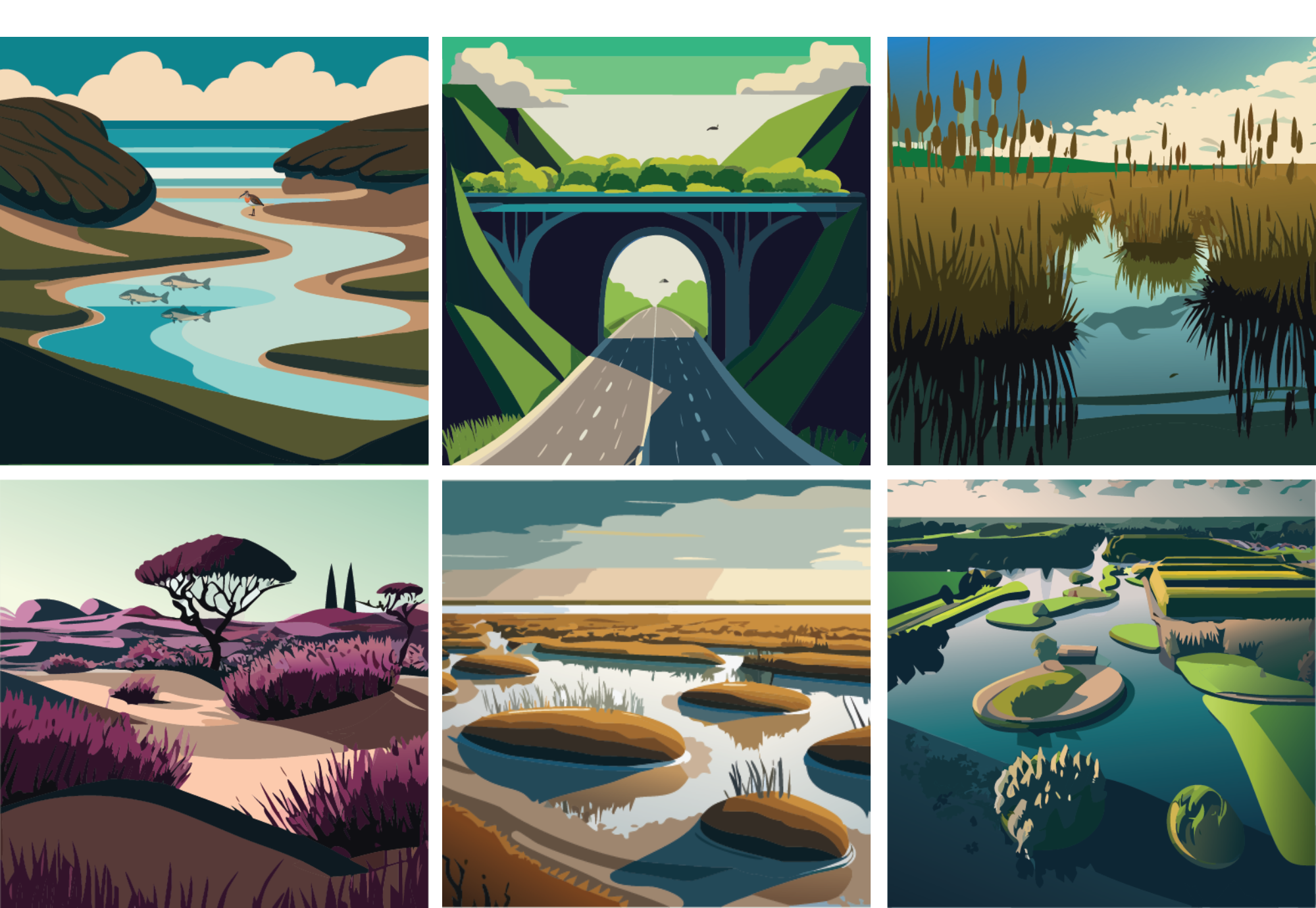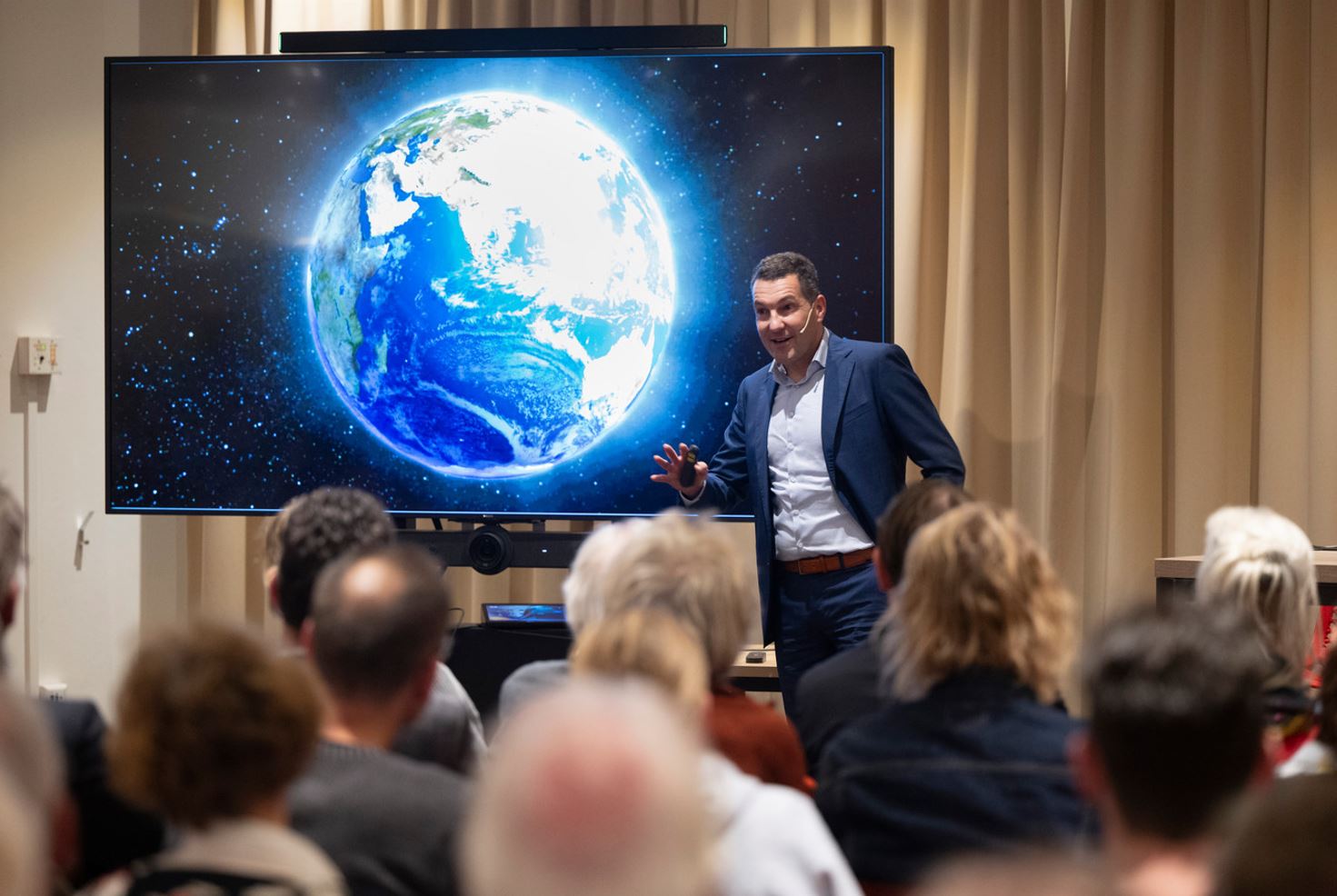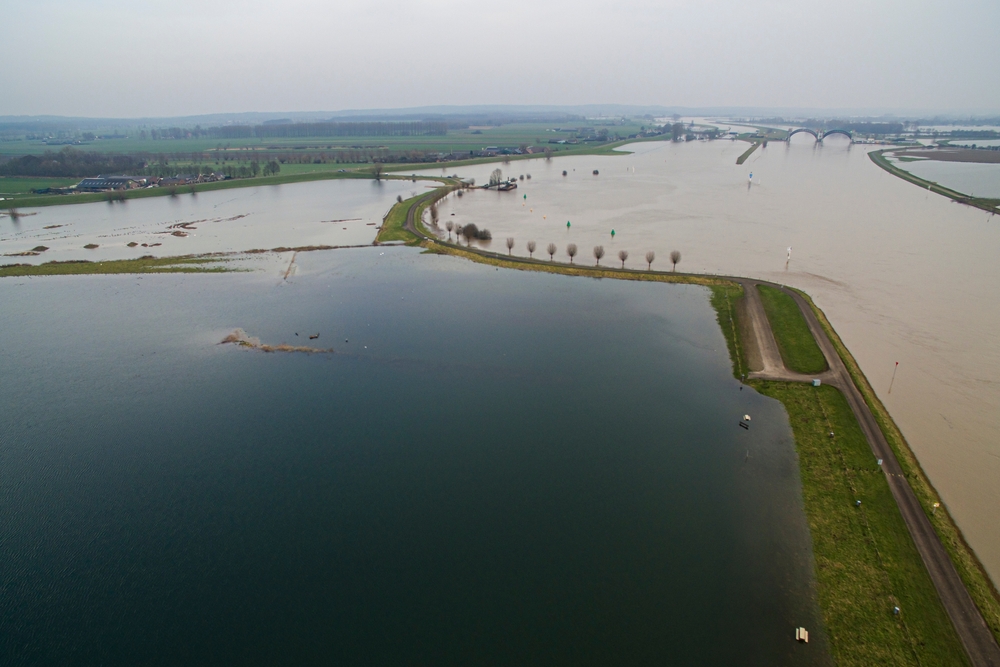What could a climate-proof Wageningen in 2120 look like? WUR researchers and municipal civil servants looked into their crystal balls.
Take a good look at the map on these pages. You can be sure it won’t be like that, for the simple reason that no one can predict the future. ‘We don’t know what the climate, mobility or the human population will look like in 100 years’ time,’ admits Climate Resilience researcher Sverre van Klaveren. ‘If you think ahead 100 years, you let go of what is or isn’t feasible. You have to go back to the question of which values you put first.’
Those values and starting points are the same as the ones underpinning the highly acclaimed project ‘The Netherlands in 2120’, led by Climate programme leader Tim van Hattum. Wageningen in 2120 is a local version of the idea, drawn up by staff and students at WUR together with local civil servants, the water board and provincial government staff. Similar future scenarios have been drawn up for various government bodies. ‘But this one is the most substantial,’ says Van Klaveren. ‘Precisely because you’re working at the local level, it’s less about abstract broad lines and more about hands-on local implementation. You have to take sensitivities into account more.’
High-rise
And there is no shortage of sensitivities. In the Wageningen of the future, for example, plenty of people live in the natural surroundings to the east of the town. High-rise residences on the Wageningse Berg, in Wageningen-Hoog and on the Celtic Fields near the railway are unthinkable in 2024. ‘Actually, we’re trying to be provocative with this,’ says Van Klaveren. ‘The municipality needs to consider where and how to build. In the future, the Rhine will be an unpredictable, flood-prone river. There will be more seepage water from the Veluwe and heavier showers. Building in the valley to the west of the town could be asking for trouble. We’re already seeing that crawl spaces in Kortenoord get flooded on a regular basis. You can build to the west of the town, but then you should build on piles. So why not build to the east?’
A campus that empties out at five o’clock is wasting space
Another eyecatcher is the 500-metre-wide dyke bordering the town, with housing on it. No, this is not a new version of the rejected 1970s plan to build all over the water meadows of the Rhine, says Van Klaveren. ‘That is not what we have in mind. The river needs space, and the water meadows will be preserved.’ The idea is that the current dyke will no longer just be a road but will be multifunctional. You might question the proposed width of the dyke, and there is quite some discussion about that in the group.’
Car-free
There is not much room for traffic in the Wageningen of the future. The city is largely car-free. Asphalt has made way for housing, green space, recreational space and urban farming. Transport to and from the city limits takes the form of monorails high above the ground. Funnily enough, those lines run exactly where tramlines once ran. Van Klaveren: ‘What transport will look like in 100 years is very much a matter of speculation. We propose a monorail, but of course it could just as easily be something else. The point is that the city is for living in. From the city limits there are faster forms of transport to hubs for transport further afield.’
We’re being provoking with this
Also striking is the design of the Binnenveld. A large forested wetland is envisaged along the Grift river. Elsewhere in the Binnenveld are numerous trial plots on which both WUR and the city practice inclusive agriculture, develop new residential models and materials, and generate alternative energy. There is a big role for WUR in this vision. There will be lots of housing on the campus, for instance. ‘A campus that empties out at five o’clock is wasting space,’ explains Van Klaveren. ‘The challenges we face in terms of housing, sustainable energy and the agricultural transition demand a lot of space. The space on campus is currently being used for only one purpose.’
Wetland forest
The population of Wageningen in 2120 is expected to be 60,000. That is a projection based on the current growth rate, so that’s like reading tealeaves too. It’s not easy to see 100 years ahead. And especially when it’s about specific things like the energy supply. In 2120 every household will generate its own energy. But it’s impossible to predict how it will do that, says Van Klaveren. ‘Natural gas is a nice example of the impermanence of everything. Widespread use of natural gas was only rolled out from the 1960s. And now, 60 years later, we are already phasing it out. So a new technology could easily be developed in the coming years that has disappeared again by 2120.’
Few people alive now will experience Wageningen in 2120. ‘But if we could, I would be particularly curious about the Binnenveld,’ says Van Klaveren. ‘The wetland forest and the alternative forms of agriculture. As well as the character of the Eng, where we have proposed a food forest.’ And yes, he would certainly pop over to the Wageningse Berg. ‘To see how the vision turned out there – with a knot in my stomach. I love to go walking there, you see.’
Also read:

 This is what Wageningen could look like in 100 years’ time, with more dense housing in the centre, homes on the dyke, high-rise flats on the Berg and hubs. Source wur.nl
This is what Wageningen could look like in 100 years’ time, with more dense housing in the centre, homes on the dyke, high-rise flats on the Berg and hubs. Source wur.nl 

